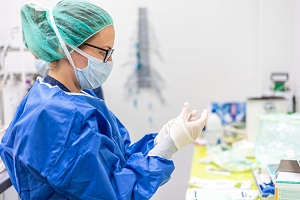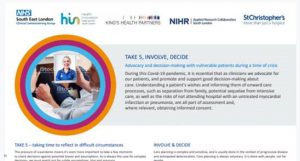
Four weeks is a long time in the life cycle of a pandemic. In my March blog I highlighted the inevitability of the need for the NHS to prioritise its resources.
At that time the ‘scarce resource’ was ICU beds and ventilators. Due to UK society’s responsiveness to the government’s ‘lock down’ strategy, the conversion of NHS hospitals to virtual COVID ICUs and the cancellation of most routine care, aided perhaps by the assumptions of the modellers at Imperial, the NHS has been able to cope. So much so, that the much-heralded Nightingale hospitals have been under-utilised.
Media attention has transferred to the ‘opportunity costs’ of this strategy highlighting the low attendance at A&E (30 %) and the exceptionally low hospitalisation rates (60% rather than the normal 90+%).
It seems that people with serious diseases (for example stroke and heart attacks) are not seeking medical help, either to ‘protect the NHS’ or themselves from iatrogenic COVID infection. Cancer patients are facing delay in their diagnosis and treatment.
Chris Whitty the Chief Medical Officer of England has always talked about the indirect deaths linked to COVID, either short term because of NHS efforts targeted at COVID or in the longer term as the result of socio-economic factors. Health inequalities are likely to widen without action to support those most vulnerable to the economic and other effects of social distancing measures.
We have also seen the media shift away from the acute NHS challenges to care provided in social care homes and how the national shortage of PPE and COVID testing is having a profound effect on how this sector is coping. It may well be in retrospect that our approach to this sector will represent the weakest aspect of our response to the pandemic.
So, care in the community is emerging as the next key area in the response to COVID-19, which will be played out in the next weeks and months. Two weeks ago South East London Clinical Commissioning Group established a working group led by Natasha Curran (of the Health Innovation Network and King’s Health Partners and Implementation Lead for the ARC South London) to provide a rapid resource to support decision making outside hospital. I was part of a group of clinicians, managers, patient advocates who came together with ethicists and legal advisors with the aim to provide guidance to clinicians in the community, on best practice for decision making with those patients with social vulnerabilities and those at risk of an unnecessarily medicalised death. The resulting publication is an easy to access resource for busy clinicians having to provide care in virtual and unfamiliar circumstances, together with information on how they can get further advice.
GPs can now phone a dedicated set of their colleagues to talk through a case, and a new ethics committee for the community has been established that can meet on a daily basis as needed.
In the next few weeks the UK government will have to make the biggest prioritisation decision in a generation – on how to balance the (relatively) easily measured direct Covid deaths with those deaths that will occur if the NHS does not return to addressing the full spectrum of diseases and the economy is not restarted. At present it is unclear how the public debate on this issue will be enacted although in his first speech after recovering from COVID the Prime Minister did say
While the deliberative process will need to be informed by the ‘science’ the decision is ultimately political. Science itself is a contested concept but it should not be forgotten that social science tells us that population health is based as much on socio-economic determinants, as the efforts put into health care systems.
By Peter Littlejohns, emeritus professor of public health, Centre for Implementation Science, ARC South London deputy director and leader of public health and multimorbidity theme


Leave a Reply